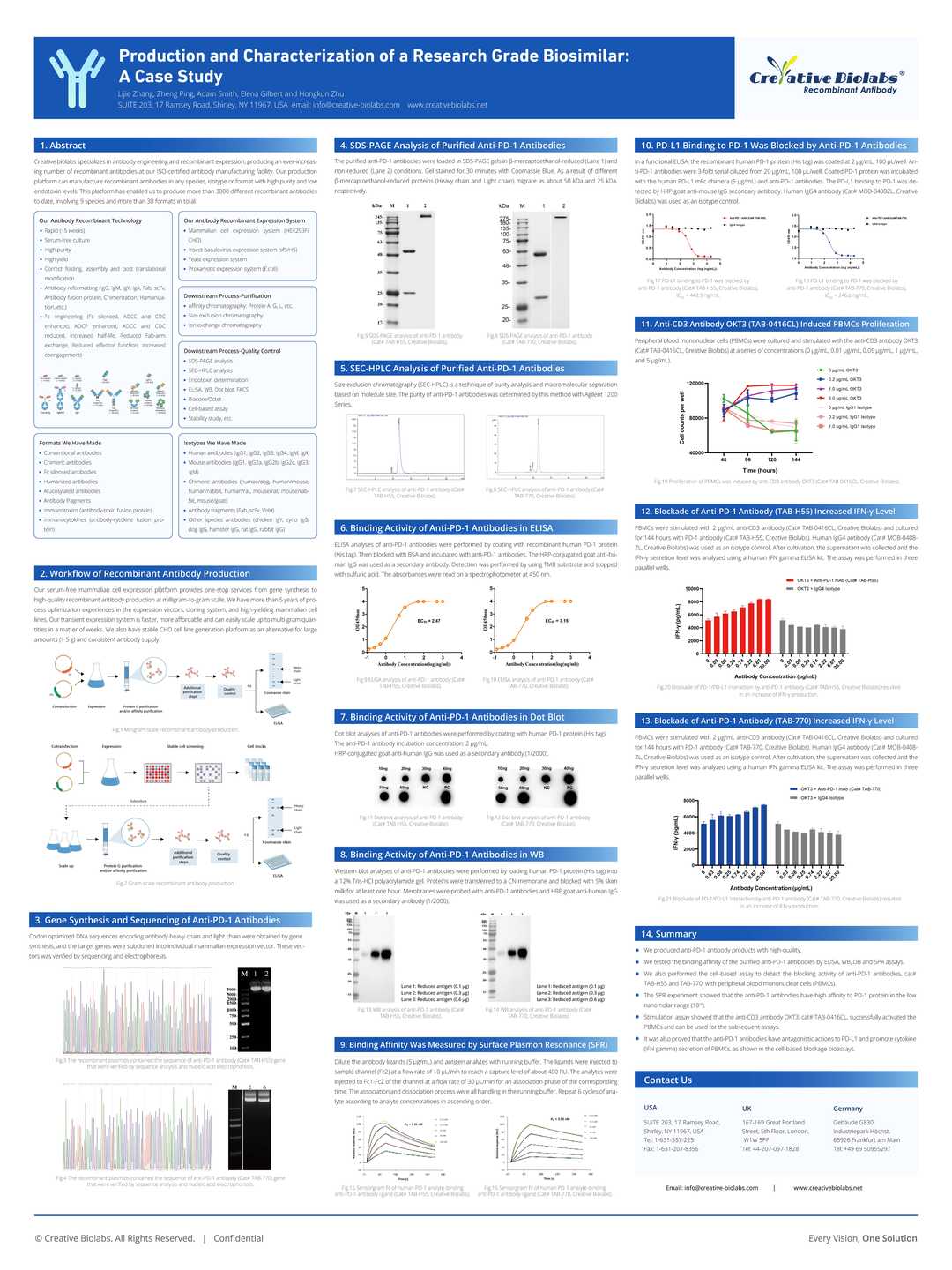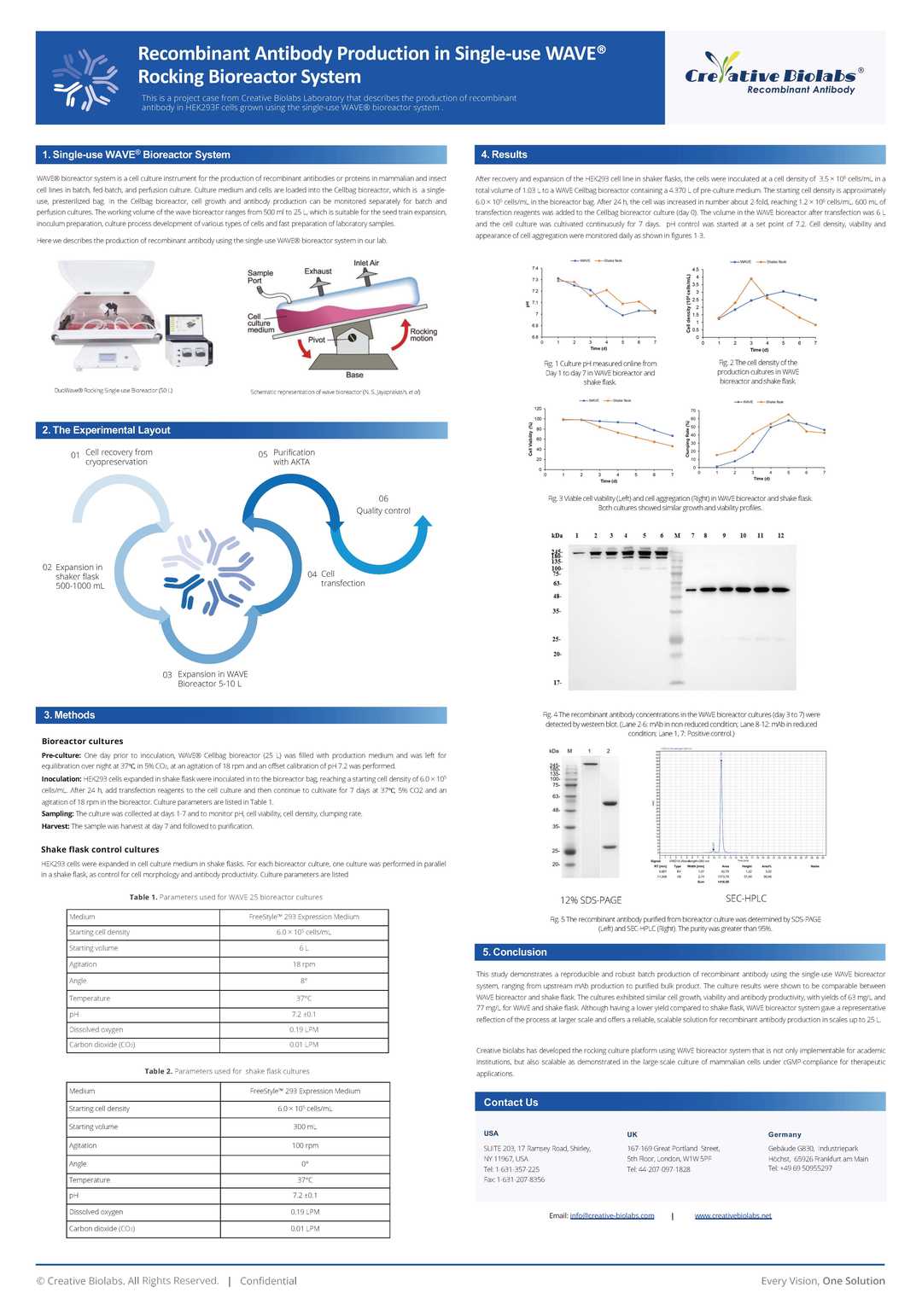Rabbit Anti-ATF4 Recombinant Antibody (VS3-CJ736)
CAT#: VS3-CJ736
This product is a rabbit antibody that recognizes human, mouse, and rat ATF4.






Specifications
- Immunogen
- Recombinant protein
- Host Species
- Rabbit
- Type
- Rabbit IgG
- Specificity
- Human, Mouse, Rat ATF4
- Species Reactivity
- Human, Mouse, Rat
- Applications
- WB, ICC, IF, IHC, IP, FC
- Conjugate
- Unconjugated
Product Property
- Purification
- Protein A affinity purified
- Purity
- >95% as determined by SDS-PAGE
- Format
- Liquid
- Buffer
- 40% Glycerol, 1% BSA, TBS, pH7.4.
- Preservative
- 0.05% Sodium Azide
- Storage
- Store at 4°C for short term. Aliquot and store at -20°C for long term. Avoid repeated freeze/thaw cycles.
Applications
- Application Notes
- This antibody has been tested for use in Western Blot, Immunocytochemistry, Immunofluorescence, Immunohistochemistry, Immunoprecipitation, Flow Cytometry.
Target
- Alternative Names
- CREB2; TXREB; CREB-2; TAXREB67
- Gene ID
- 468
- UniProt ID
- P18848
- Sequence Similarities
- Belongs to the bZIP family.
- Cellular Localization
- Cell membrane, Cytoplasm, Cytoskeleton, Membrane, Nucleus
- Post Translation Modifications
- Ubiquitinated by SCF(BTRC) in response to mTORC1 signal, followed by proteasomal degradation and leading to down-regulate expression of SIRT4 (PubMed:11238952).
Interaction with EP300/p300 inhibits ubiquitination by SCF(BTRC) (PubMed:16219772).
Phosphorylation at Ser-245 by RPS6KA3/RSK2 in osteoblasts enhances transactivation activity and promotes osteoblast differentiation (PubMed:15109498).
Phosphorylated on the betaTrCP degron motif at Ser-219, followed by phosphorylation at Thr-213, Ser-224, Ser-231, Ser-235 and Ser-248, promoting interaction with BTRC and ubiquitination (By similarity).
Phosphorylation is promoted by mTORC1 (By similarity).
Phosphorylation at Ser-215 by CK2 decreases its stability (PubMed:23123191).
Phosphorylated by NEK6 (PubMed:20873783).
Hydroxylated by PHD3, leading to decreased protein stability.
- Protein Refseq
- NP_001666.2; NP_877962.1
- Function
- Transcription factor that binds the cAMP response element (CRE) (consensus: 5'-GTGACGT[AC][AG]-3') and displays two biological functions, as regulator of metabolic and redox processes under normal cellular conditions, and as master transcription factor during integrated stress response (ISR) (PubMed:17684156, PubMed:16682973, PubMed:31444471, PubMed:32132707).
Binds to asymmetric CRE's as a heterodimer and to palindromic CRE's as a homodimer (By similarity).
Core effector of the ISR, which is required for adaptation to various stress such as endoplasmic reticulum (ER) stress, amino acid starvation, mitochondrial stress or oxidative stress (PubMed:32132707).
During ISR, ATF4 translation is induced via an alternative ribosome translation re-initiation mechanism in response to EIF2S1/eIF-2-alpha phosphorylation, and stress-induced ATF4 acts as a master transcription factor of stress-responsive genes in order to promote cell recovery (PubMed:32132706, PubMed:32132707).
Promotes the transcription of genes linked to amino acid sufficiency and resistance to oxidative stress to protect cells against metabolic consequences of ER oxidation (By similarity).
Activates the transcription of NLRP1, possibly in concert with other factors in response to ER stress (PubMed:26086088).
Activates the transcription of asparagine synthetase (ASNS) in response to amino acid deprivation or ER stress (PubMed:11960987).
However, when associated with DDIT3/CHOP, the transcriptional activation of the ASNS gene is inhibited in response to amino acid deprivation (PubMed:18940792).
Together with DDIT3/CHOP, mediates programmed cell death by promoting the expression of genes involved in cellular amino acid metabolic processes, mRNA translation and the terminal unfolded protein response (terminal UPR), a cellular response that elicits programmed cell death when ER stress is prolonged and unresolved (By similarity).
Together with DDIT3/CHOP, activates the transcription of the IRS-regulator TRIB3 and promotes ER stress-induced neuronal cell death by regulating the expression of BBC3/PUMA in response to ER stress (PubMed:15775988).
May cooperate with the UPR transcriptional regulator QRICH1 to regulate ER protein homeostasis which is critical for cell viability in response to ER stress (PubMed:33384352).
In the absence of stress, ATF4 translation is at low levels and it is required for normal metabolic processes such as embryonic lens formation, fetal liver hematopoiesis, bone development and synaptic plasticity (By similarity).
Acts as a regulator of osteoblast differentiation in response to phosphorylation by RPS6KA3/RSK2: phosphorylation in osteoblasts enhances transactivation activity and promotes expression of osteoblast-specific genes and post-transcriptionally regulates the synthesis of Type I collagen, the main constituent of the bone matrix (PubMed:15109498).
Cooperates with FOXO1 in osteoblasts to regulate glucose homeostasis through suppression of beta-cell production and decrease in insulin production (By similarity).
Activates transcription of SIRT4 (By similarity).
Regulates the circadian expression of the core clock component PER2 and the serotonin transporter SLC6A4 (By similarity).
Binds in a circadian time-dependent manner to the cAMP response elements (CRE) in the SLC6A4 and PER2 promoters and periodically activates the transcription of these genes (By similarity).
Mainly acts as a transcriptional activator in cellular stress adaptation, but it can also act as a transcriptional repressor: acts as a regulator of synaptic plasticity by repressing transcription, thereby inhibiting induction and maintenance of long-term memory (By similarity).
Regulates synaptic functions via interaction with DISC1 in neurons, which inhibits ATF4 transcription factor activity by disrupting ATF4 dimerization and DNA-binding (PubMed:31444471).
(Microbial infection) Binds to a Tax-responsive enhancer element in the long terminal repeat of HTLV-I.
Customer Review
There are currently no Customer reviews or questions for VS3-CJ736. Click the button above to contact us or submit your feedback about this product.
Submit Your Publication
Published with our product? Submit your paper and receive a 10% discount on your next order! Share your research to earn exclusive rewards.
Downloadable Resources
Download resources about recombinant antibody development and antibody engineering to boost your research.
Product Notes
This is a product of Creative Biolabs' Hi-Affi™ recombinant antibody portfolio, which has several benefits including:
• Increased sensitivity
• Confirmed specificity
• High repeatability
• Excellent batch-to-batch consistency
• Sustainable supply
• Animal-free production
See more details about Hi-Affi™ recombinant antibody benefits.
Datasheet
MSDS
COA
Certificate of Analysis LookupTo download a Certificate of Analysis, please enter a lot number in the search box below. Note: Certificate of Analysis not available for kit components.
Protocol & Troubleshooting
We have outlined the assay protocols, covering reagents, solutions, procedures, and troubleshooting tips for common issues in order to better assist clients in conducting experiments with our products. View the full list of Protocol & Troubleshooting.
Isotype Control
- CAT
- Product Name
Secondary Antibody
- CAT
- Product Name
See other products for "ATF4"
Select a product category from the dropdown menu below to view related products.
| CAT | Product Name | Application | Type |
|---|---|---|---|
| DrMAB-226 | Human Anti-ATF4 Recombinant Antibody (clone U67) | IP, IF, WB | Human IgG1 |
| MRO-0131-CN | Rabbit Anti-ATF4 Recombinant Antibody (clone CBACN-048) | WB, IF, IHC, IP, FC | Rabbit IgG |
| ZG-0553J | Rabbit Anti-ATF4 Recombinant Antibody (clone 9E1) | ELISA, WB, IHC, IF, FC, IP | Rabbit IgG |
| VS7-HM147 | Mouse Anti-ATF4 Recombinant Antibody (clone 2A6F12) | WB, IHC | Mouse IgG1 |
| CAT | Product Name | Application | Type |
|---|---|---|---|
| VS-0325-XY193 | Anti-ATF4 Immunohistochemistry Kit | IHC | |
| VS-0525-XY578 | Anti-Rat ATF4 Immunohistochemistry Kit | IHC | |
| VS-0525-XY579 | Anti-Mouse ATF4 Immunohistochemistry Kit | IHC | |
| VS-0525-XY577 | Anti-Human ATF4 Immunohistochemistry Kit | IHC |
| CAT | Product Name | Application | Type |
|---|---|---|---|
| VS13-YC73 | CytoStream™ Rabbit Anti-ATF4 Recombinant Antibody (VS13-YC73) | WB, ICC, IF, IHC-P, IP, FC | Rabbit IgG |
Popular Products

Application: IP, IF, FuncS, FC, Neut, ELISA, ICC

Application: FuncS, IF, Neut, ELISA, FC, IP, ICC

Application: FC, ADCC, CDC, Inhib

Application: ELISA, IHC, FC, IP, IF, FuncS

Application: ELISA, IHC, FC, IP, IF, FuncS

Application: Neut, ELISA, IF, IP, FuncS, FC

Application: ELISA, Block, WB, FC, IP
For research use only. Not intended for any clinical use. No products from Creative Biolabs may be resold, modified for resale or used to manufacture commercial products without prior written approval from Creative Biolabs.
This site is protected by reCAPTCHA and the Google Privacy Policy and Terms of Service apply.
























